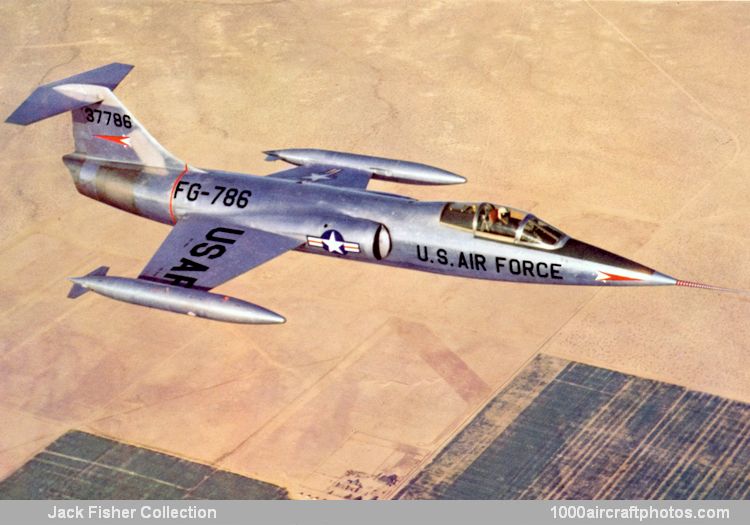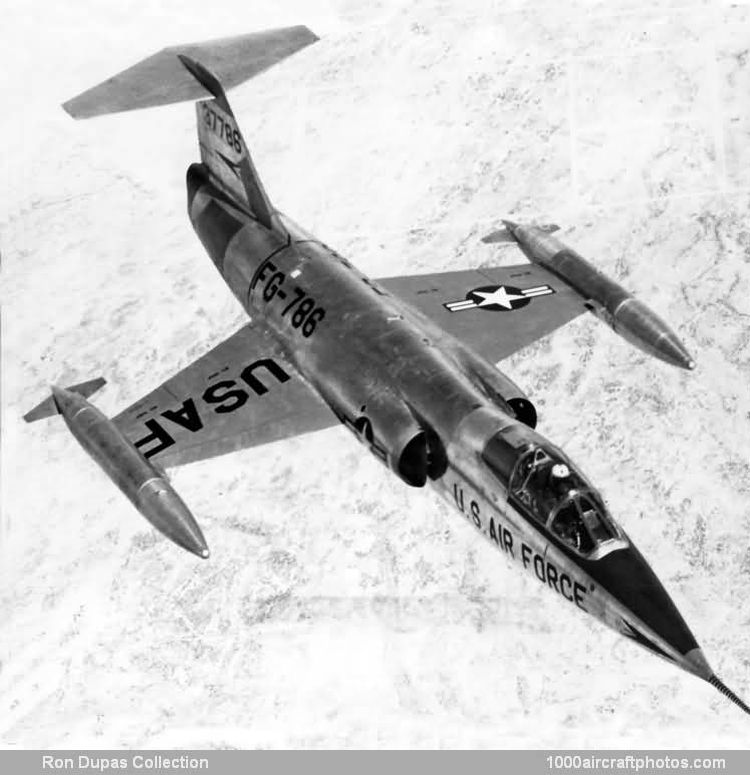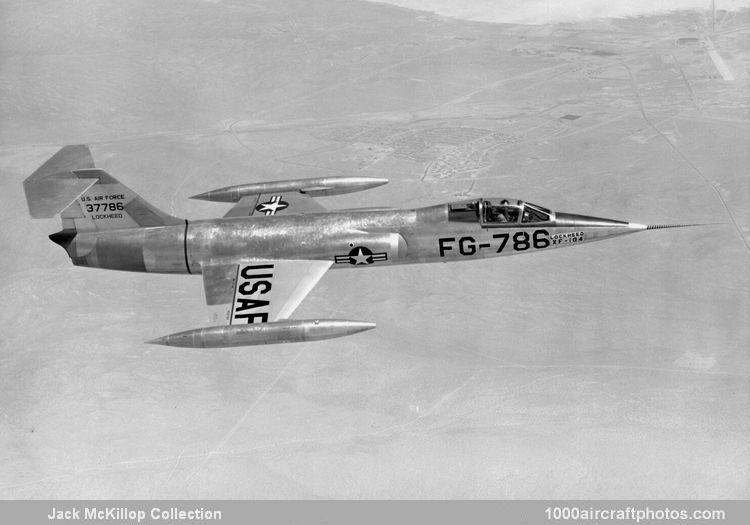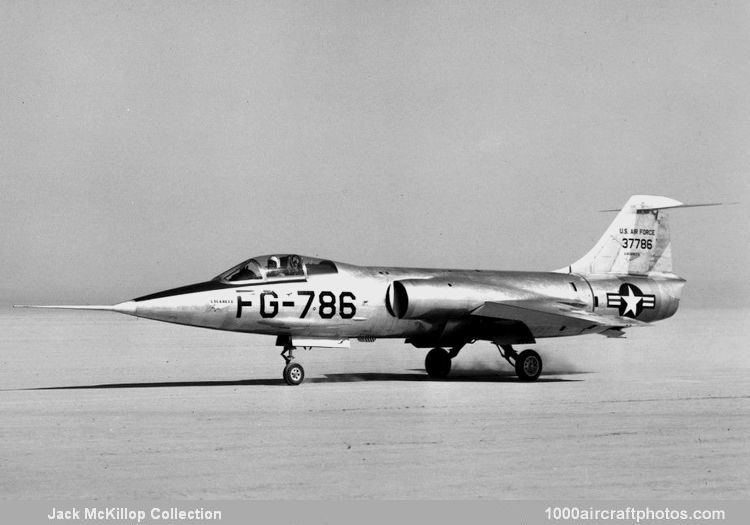05/31/2010. Remarks by Johan Visschedijk: "In November 1952 Lockheed submitted an unsolicited proposal to the USAF for a relatively simple air-superiority fighter with straight, thin wing. Although the Air Force did not have a standing requirement for this type of fighter, the appeal of Lockheed's proposal was such that within a month the Service prepared a General Operational Requirement calling for a lightweight air-superiority fighter to replace the North American F-100s in Tactical Air Command beginning in 1956, and invited competitive bids from Lockheed, North American and Republic.
During January 1953 Lockheed's design was selected and on March 12, 1953, Letter Contract AF 33(600)-23362 for two XF-104s (s/n 53-7786, 53-7787) was issued (Weapon System WS-303A). Under the guidance of Kelly Johnson and project engineer Bill Ralston, the program then moved swiftly, with mock-up inspection taking place on April 30 and resulting in the substitution of a 0.787 in (20 mm) General Electric six-barrel Gatling-type cannon in place of the two 1.18 in (30 mm) cannon suggested by Lockheed. At that time the aircraft's long and pointed fuselage, and its small wing area, already imparted its characteristic 'missile with a man in it' appearance.
To achieve their calculated Mach 2 top speed, the production aircraft were to be powered by a single Wright J65 (a license-built version of the British-designed Armstrong Siddeley Sapphire) axial-flow turbojet with afterburner. However, the first prototype, construction of which had begun during the summer of 1954, initially received a non-afterburning, Buick-built, XJ65-W-6 with 7,800 lb (3,538 kg) thrust and 10,200 lb (4,627 kg) with afterburner. Trucked to Edwards AFB, the first XF-104 was readied for its maiden flight with Tony LeVier at the controls.
After a short and straight hop on February 28, 1954, the XF-104 experienced landing gear retraction problems during its first full flight on March 4, 1954. Subsequently, one of the XF-104s, powered by an afterburning J65, reached a top speed of 1,324 mph (2,130 km/h) on March 25, 1955. The second prototype was lost twenty-four days later, when H. 'Fish' Salmon was forced to use the downward-ejection seat during gun-firing trials, but the first XF-104 was accepted by the USAF in November 1955. This also crashed, due to uncontrollable tail flutter on July 11, 1957, the pilot Bill Park ejected safely."



